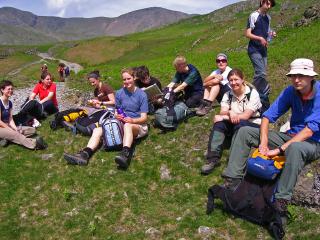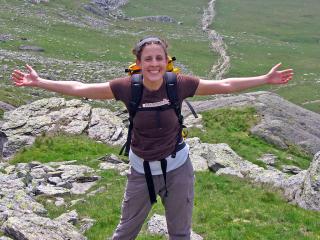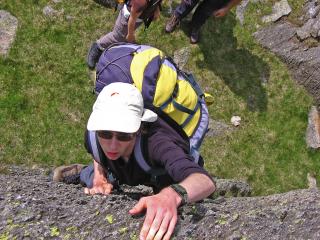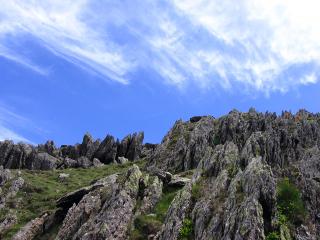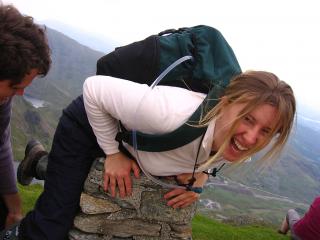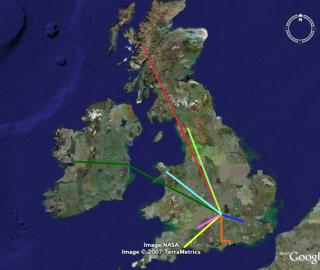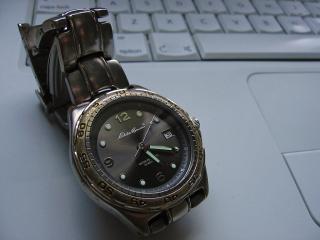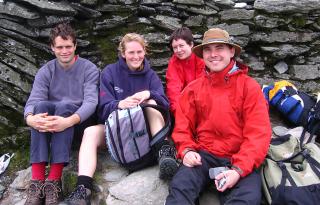
The weekend in Lakeland was most enjoyable. We spent Saturday and Sunday walking, each time going around a horseshoe of peaks. Saturday, it was the Coniston horseshoe, starting with the Old Man. That day involved some enjoyable scrambling, a bit of actual rock climbing (for those who cared to try), and a brief nighttime rescue operation. Thankfully, those we set out to find met us on the road back from where we were heading to look for them. Sunday, we did the Kentmere Horseshoe, starting with Yoke.
The walking was atypical of the club for a couple of reasons. Firstly, I had never previously spent a day with them in which it did not rain significantly. Neither day of this trip involved any rain at all. Secondly, this was distinctly less strenuous than Snowdonia, which was distinctly less strenuous than Scotland. I rather enjoyed the drama of steep slopes and narrow, windy ridges during the previous two trips. Of course, there is something to be said for sheep-speckled tranquility as well.
In terms of company, this trip met the high expectations I had of the Walking Club. There is always a fascinating mixture of people from different fields – from theology to comparative literature to medicine – and they tend to get along in a very spontaneous way, even when they have not met before.
Photos and such to follow. For now, I need to get some sleep.

